- Home
- David Brin
The Transparent Society Page 11
The Transparent Society Read online
Page 11
Let me take a step back at this point and confess that I’m not an attorney or legal scholar. Still, it is possible for an educated citizen to follow the general outlines of modern American privacy law as it continues to evolve across the end of the twentieth century. Of particular interest is Dean William Prosser’s 1960 analysis of the privacy tort, which divides it into four categories. 1. Intrusion covers the violation (physical or otherwise) of another person’s solitude in a highly offensive manner, for example, barging into the hospital room of a suffering victim and taking a picture over his or her objections.
2. Disclosure of private facts relates to the publicizing of highly offensive private information about someone that is not of legitimate interest to the public. This tort is entirely separate from libel and slander, which are covered by explicit statutes. Under the “private facts” tort, one can be held liable for damages even if the disclosed information was true. It should be noted that this tort is questioned by many legal scholars, with some states rejecting it entirely. Some others use “newsworthiness” as a test to determine whether a suit may proceed. It is also important to note that public figures can find no recourse in this principle.
3. False light is the act of portraying someone in a harmful manner, such as using the person’s photo to illustrate a newspaper story about pedophilia, even if it is never explicitly stated that this individual was accused of the crime.
4. Appropriation consists of taking another person’s name, likeness, or other identity-related data for unapproved use. This might apply to identity theft, as discussed earlier, although there are already laws against fraud. (See chapter 4 regarding who owns information.) Or it might also be used to seek redress against a company using a sports figure’s likeness in advertising without her permission. (In this case, a public figure has greater-than-average protection.)
It should be noted that invasion-of-privacy lawsuits were rather rare before 1960, but after Prosser’s article became influential, floodgates appeared to open. A new “right” became widely (and often indignantly) defended across the American landscape. And yet, Prosser’s four categories are far from universally accepted. Nor have we begun to see more than a glimmer of their implications for the electronic age.
Although much of the legal activity surrounding privacy is taking place in the turbid realm of torts, there has also been some legislation by statute. For instance, when Judge Robert H. Bork was nominated to the U.S. Supreme Court, some journalists obtained his video rental records, presumably to learn if he had kinky tastes. Outraged by this intrusion, Congress passed the Video Privacy Act, outlawing this narrowly specific invasion of privacy. As yet, there is no comparable protection for books or periodicals, or even our medical histories. The Fair Credit Reporting Act gives individuals access to their records and limits disclosure of credit files. The Telephone Consumer Protection Act regulates telephone solicitations, and the Driver’s Privacy Protection Act limits the release of motor vehicle records. But these laws are riddled with exceptions allowing “routine use” and the divulging of protected information for “legitimate business needs.” Alderman and Kennedy sum up the situation thus: “As even a partial list of privacy laws indicates, they address a hodgepodge of individual concerns. The federal statutory scheme most resembles a jigsaw puzzle in which the pieces do not fit.”
State laws sometimes try to fill in, but for the most part they are just as woefully scattershot. Anyway, they prove next to useless when it comes to matters in cyberspace, where there are no state, or even national, boundaries.
What all this shows is that the legal definition of privacy is still not chiseled in stone. More than a hundred years after Warren and Brandeis called for a right to privacy, the outlines of such a general, overarching principle remain downright murky. Even as we plunge into the electronic age, legal scholars keep hedging, backtracking, and disagreeing over the constantly shifting borderline between the essential interests of the individual and the practical needs of an urban state.
This chaos is especially noteworthy when we compare it to the way certain other rights, especially that of free speech, are treated as quasi-religions essences and defended with rulings that are fierce in their sweeping, uncompromising clarity. Robert Bork is among the many jurists who have called privacy a “derived” right, not a basic one, like free speech.
What does tend to come through many recent privacy decisions is the following: 1. The “right to be let alone,” to go about our lives free from unreasonable interference by external forces, has become somewhat accepted as a guiding principle of common law.
2. A ruling of “unreasonable interference” is more probable if the plaintiff faces actual harm or active obstacles to exercising personal sovereignty. It is much less likely to be accepted if complainants merely do not like others knowing things about them.
3. The pragmatic outcome of a case—winch party is hurt and by how much—generally matters at least as much as any all-encompassing precept. An invasion of privacy is often whatever seems unduly invasive according to the standards of reasonable contemporary citizens.
PRIVACY LAW IN ALLIED NATIONS
What are the legal traditions in other parts of the neo-West7 Privacy is not seen quite the same way, even in countries that share many common values. The European approach to privacy matters may in some ways seem more relaxed than in the United States. Many nations make income tax records public, for example, without much apparent harm or resentment. Sweden gives citizens a unique identification number that tracks them all their lives.
Other aspects of privacy receive more thorough protection, to the point of being guaranteed in national constitutions. Many European countries, as well as Canada, Australia, New Zealand, Hong Kong, and Japan, have created an office of privacy commissioner, something unseen in the United States. In 1980, the Organization of Economic Cooperation and Development (OECD) adopted Guidelines on the Protection of Privacy and Transborder Flows of Personal Data, whose goal was to “harmonize national privacy legislation and, while upholding such human rights, [to] at the same time prevent interruptions in international flows of data.”
In 1998, a further evolution of the OECD’s Guidelines will go into effect with the European Union’s (EU) Directive on Protection of Personal Data. This edict aims to establish “a stable regulatory framework to enable the movement of personal data from one country to another, while at the same time ensuring that privacy protection is ‘adequate’ in the country to which the data is sent. If the recipient country has not established a minimum standard of data protection, it is expected that the transfer of data will be prohibited.”
At this point it seems unlikely that American standards will be “adequate” in time, posing the possibility that transfer of personal data from EU countries to the United States may be disrupted.
“PRACTICAL OBSCURITY”?
Many kinds of government data have traditionally been accessible to the public, especially to diligent researchers willing to spend considerable time and energy driving from courthouse to city hall, then to the local federal building, then to the hall of records and back again. These open files generally include property tax records, voter rolls, and committee minutes, as well as the daily log of pleas, prosecutions, and arraignments at each widely dispersed courtroom. While such archives might be restricted in many other nations, the basic principle behind free access in America is the same one underlying this book, namely, accountability. Even before the computer was invented, any citizen with the requisite passion, intelligence, skill, and free time might collate enough information to prepare a case against a corrupt administrator, nailing him either for malfeasance or some outrageous error, even if the authorities formally charged with the official’s supervision had failed at their task.
High officials have always felt profound ambiguity toward this tradition. Even as august and respected a leader as postwar Secretary of State George Marshall once said that he approved of democracy highly “... tho
ugh I suffer from it greatly.” As we saw at the end of chapter 2, and will explore further, our system encourages the unleashing of countless amateur sleuths and activists, each self-righteously determined to foil some perceived outrage and insistent on accessing all the tools they need to prove their point.
Elected and appointed officials, being human, naturally resist being held accountable in such a confrontational fashion. Even those with a clear conscience typically drag their feet, for instance, by delaying compliance with requests filed under the Freedom of Information Act (FOIA). They cite national security, or claim forgetfulness, or fail to budget for compliance (resulting in yearlong queues for even simple questions), or use “spin control” to avoid giving direct answers that might be taken out of context. Above all, many are terrified by the latest trend of computerized and rapid public access to all “open” records.
Many of the files that used to take teams of researchers days and weeks to pore through, laboriously visiting scores of locales, can now be scanned by online search engines, delivering swift and accurate correlations. This development understandably frightens some bureaucrats, who foresee hordes of news reporters and dilettante activists swarming over every document, peering to find the slightest mistake. Desperate for an excuse to impede this floodlight of enhanced accountability, some officials have grasped at a convenient and popular rationale, privacy.
Some years ago, while investigating possible illegal campaign contributions, CBS news correspondent Robert Schackne applied under FOIA for a set of raw FBI criminal data that were officially part of the public record. The FBI refused, and the agency’s position was subsequently sustained by the U.S. Supreme Court on the grounds that Schackne’s trawling violated the personal privacy of those listed in the database. Writing for the majority, Justice John Paul Stevens noted that while most of the material contained in the FBI’s rap sheets was public, private citizens had hitherto benefited from their “practical obscurity.” “There is a vast difference between the public records that might be found after a diligent search of courthouse files, county archives and local police stations throughout the country and a computerized summary located in a single clearinghouse,” Stevens wrote in the 1989 Justice Dept. v. Reporters Committee decision.
Which means that it was all right to make paper records available, because they were effectively inaccessible to all but the most determined, or those rich enough to hire paid researchers. As far as the common man or woman was concerned, the records might as well be located on the Moon—and this situation was a good thing, according to Stevens.
But computer accessibility came along, threatening this happy equilibrium. If unchecked, the tools would prove intolerably invasive.
To the plaintiffs in the 1989 case, the message sent by this decision was evident. The First Amendment is great, as long as there is no efficient means of carrying it out. Indeed, a number of jurists and legislators have proposed to solve the computerization problem by establishing a new legal principle: that access to electronic records should be roughly equivalent to their availability on paper. Presumably, this might be done by resetting your modem down to a mere 15 baud, whenever you connect to one of these bad but open databases.
As absurdly Luddite as the proposal appears at first sight, matters are actually far worse, since powerful entities—big corporations, government bureaucrats, or anyone with official connections—already have access to the electronic data stores, and no initiative will cut them off. In effect, an opportunity to greatly improve the flow of light and accountability is being used instead as an excuse to reduce it. Using privacy as a shield, members of a threatened Brahmin class seek to freeze the world as they were accustomed to it—a slow-paced realm of quaint filing cabinets, acid-tongued clerks, and manila folders redolent of dust and termites. Presumably, the same scholars would also rule that financial transactions should move no faster than when we all pulled heavy coins from leather purses.
True, the databases can be abused, and they contain a multitude of errors (see examples in the first part of this chapter). Privacy will be put under some stress if people become expert at perusing the whole range of public documentation. Basic rethinking may be appropriate concerning which kinds of personal information can be released, and when. Proposed systems like Open Profiling and TRUSTe show how some believe we can implement fair information practices—though with transparency in mind, we should err on the side of openness.
All of that can be negotiated, as long as the result puts average citizens on even ground with MegaCorp, Inc. But deliberately fostered “obscurity” is no solution. Rather, it is a craven refusal to seek a solution. Errors can be corrected only after being discovered, and the best way to prevent abuse is to let everyone in equally, shining light on all potential abusers of trust and forcing them to realize that they are being watched, even as they peer at others.
What does this all mean? When it comes to privacy, there are many inductive rules, but very few universally accepted axioms.
If we cannot count on jurists to define privacy for us, or legislators to supply realistic protections for it, those tasks will largely be our responsibility during the decades and generations to come. Judges and scholars have trod lightly along this path for one reason above all others: as the years go by it is a free citizenry, not only in America but throughout the neo-West, that will ultimately decide how much priority to give the matter.
In the long run, it will come down to us, deciding what we want.
The right to privacy includes a sense of autonomy, a right to develop a unique personality and living space, and a right to distinguish one’s own persona from everyone else’s.
ROBERT ELLIS SMITH
PRIVACY AS A PERSONAL GOAL
Well, then, what should we want?
Philosophers have also been at work—quite separately from legal scholars—attempting to palpate, measure, and encompass the concept of privacy. For example Alan Westin, in his influential work Privacy and Freedom, described four kinds: solitude, anonymity, reserve, and intimacy.
The most complete form of privacy, solitude, is about seeking separation from your fellow humans and being secure against intrusion, observation, or interruption, free to “let your hair down” and do what you would not do if there were a chance of being watched. This may involve anything from routine toiletry all the way to shouting out the rage against the world that all of us feel now and then but some never dare express in public. Most people find enforced or protracted solitude intolerable, but when undertaken voluntarily it can be essential for creativity, a sense of freedom, or restoring the soul.
To be anonymous is to be unnamed, unnoticed, part of a crowd. In an urban setting, anonymity can provide many of the same benefits as solitude, letting us stroll down a busy street content that no one is likely to be looking at us at this precise moment. Yet, in the anonymous context we can be people watchers, or express feelings we might suppress if those nearby knew our name. While this kind of privacy leaves hooligans and criminals unaccountable, anonymity also shelters a shy person from having to guard every word. Lost amid the mob at a sports stadium, she can yell her head off as she might never dare to, back among family and friends.
Reserve could be illustrated by an elegant person who is detached and dignified—or else by the pimply kid sitting across from you on a bus, withdrawn behind headphones into his own private world. Such people are not necessarily anonymous. You may know their names. Yet by choice they are not entirely there. They withhold opinions and confidences, preserving them to share with others, or at another time. Even the most extroverted among us wants the option to choose, moving back and forth across a spectrum of reserve.
Westin’s fourth state, intimacy, is the opening of a door between two gardens, a merging of realities, even as the rest of humanity is barred from taking part. If the gist of all types of privacy is choice and control, then intimacy—the choice of whom to share with, how much, and for how long—is its purest form. O
r, as Janna Malamud Smith puts it, “The virtue of privacy, as I have come to understand it, is not in isolating people, but in allowing them temporary space in which they may accomplish important human tasks that are otherwise thwarted.”
This is just a summary, and Westin is not without critics in privacy circles. But the capsule version presented here may prove useful to our work in this book. If I sound sympathetic to all four types of privacy mentioned above, the reader should not be surprised. As a human, I recognize all these needs in myself, and can extrapolate that they also apply to the other bipedal beings around me who are striving, shouting, and hurting. Moreover, to be an eccentric in this world is to have special needs and cravings for solitude, anonymity, reserve, and intimacy. There is just one salient point to add: All of these deeply human desiderata are enhanced by freedom.
Despite sharing the world with more than six billion pairs of sapient eyes on a planet where every square meter appears to have been explored or exploited, and where cities teem increasingly with cameras, it can reasonably be argued that most citizens of the affluent neo-West have more access to Westin’s four privacies than their ancestors ever did. Although life’s frenetic pace seems to press from all sides, things were hardly any better for our farmer forebears. At least we do have headphones, private bedrooms, the sealed enclosures of our automobiles, several thousand square miles of urban and rural landscape within an hour’s drive, and telephones to reach that special intimate friend, even when he or she lives half a continent away.

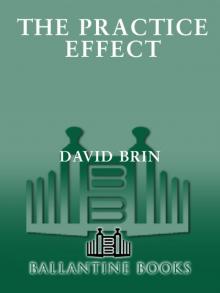 The Practice Effect
The Practice Effect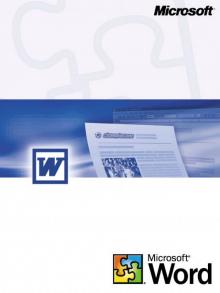 Infinity's Shore
Infinity's Shore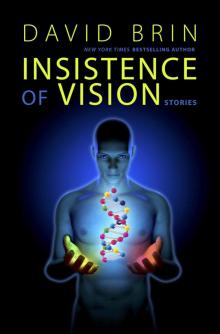 Insistence of Vision
Insistence of Vision Sundiver
Sundiver Brightness Reef
Brightness Reef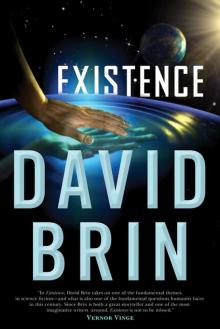 Existence
Existence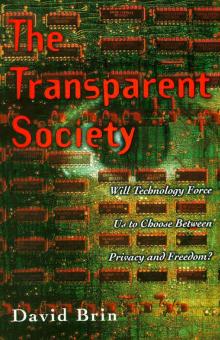 The Transparent Society
The Transparent Society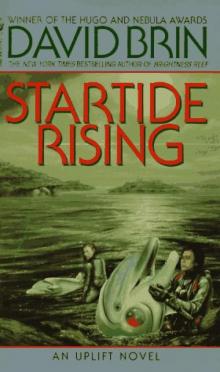 Startide Rising
Startide Rising The Postman
The Postman The Uplift War
The Uplift War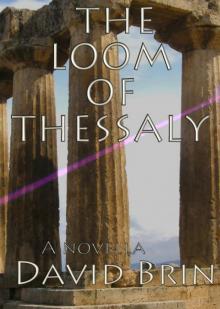 The Loom of Thessaly
The Loom of Thessaly Otherness
Otherness Sundiver u-1
Sundiver u-1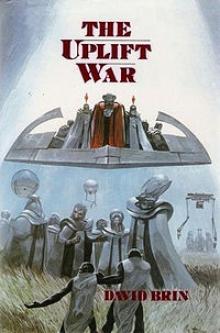 The Uplift War u-3
The Uplift War u-3 Infinity's Shore u-5
Infinity's Shore u-5 Brightness Reef u-4
Brightness Reef u-4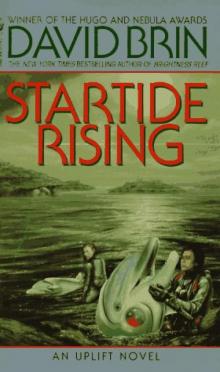 Uplift 2 - Startide Rising
Uplift 2 - Startide Rising Kiln People
Kiln People Heaven's Reach u-6
Heaven's Reach u-6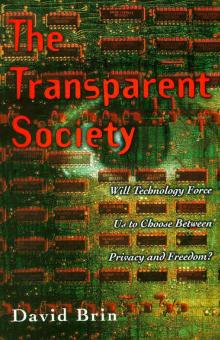 The Transparent Society: Will Technology Force Us to Choose Between Privacy and Freedom?
The Transparent Society: Will Technology Force Us to Choose Between Privacy and Freedom? Star Wars on Trial
Star Wars on Trial Lungfish
Lungfish Tank Farm Dynamo
Tank Farm Dynamo Just a Hint
Just a Hint A Stage of Memory
A Stage of Memory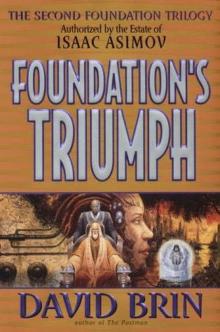 Foundation’s Triumph sf-3
Foundation’s Triumph sf-3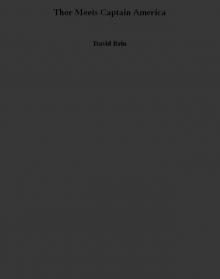 Thor Meets Captain America
Thor Meets Captain America Senses Three and Six
Senses Three and Six The River of Time
The River of Time Chasing Shadows: Visions of Our Coming Transparent World
Chasing Shadows: Visions of Our Coming Transparent World Foundation's Triumph
Foundation's Triumph Startide Rising u-2
Startide Rising u-2 The Fourth Vocation of George Gustaf
The Fourth Vocation of George Gustaf The Heart of the Comet
The Heart of the Comet The Crystal Spheres
The Crystal Spheres